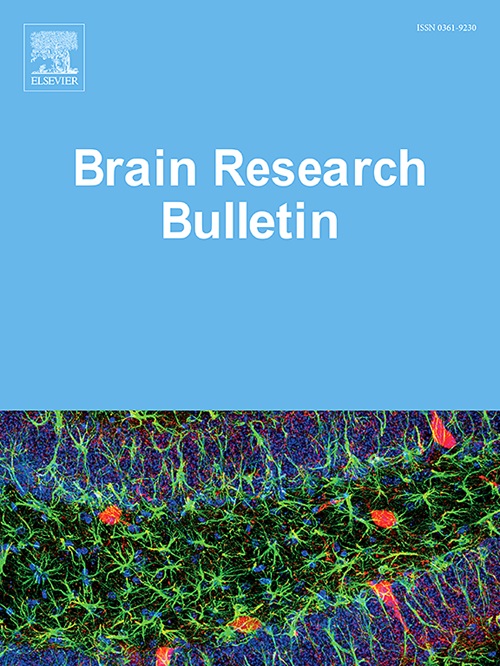Pharmacological modulation of Sigma-1 receptor ameliorates pathological neuroinflammation in rats with diabetic neuropathic pain via the AKT/GSK-3β/NF-κB pathway
IF 3.5
3区 医学
Q2 NEUROSCIENCES
引用次数: 0
Abstract
Diabetic neuropathic pain (DNP) is a common complication of diabetes mellitus (DM) and is characterized by spontaneous pain and neuroinflammation. The Sigma-1 receptor (Sig-1R) has been proposed as a target for analgesic development. It is an important receptor with anti-inflammatory properties and has been found to regulate DNP. However, it is not known whether Sig-1R can ameliorate pathological neuroinflammation in DNP. The present study used a rat model of DNP and a highly selective agonist of Sig-1R to assess the effects of the protein on neuropathic pain in rats with type 2 diabetes mellitus. The rats were divided into Control, Model, Sig-1R agonist PRE-084 (0.3, 0.6, 1 mg/kg), and metformin (Met, 20 mg/kg) groups, with seven rats per group, and their body weight, fasting blood glucose, mechanical withdrawal threshold and thermal withdrawal latency were tested weekly for two weeks. After treatment with PRE-084, the pain thresholds in the DNP rats were significantly improved, together with pathological changes in the dorsal root ganglion, reductions in the serum levels of TNF-α, IL-1β, IL-6, MOD, and prostaglandin E2 (PGE2), and the activity of superoxide dismutase was increased. The mRNA levels of TNF-α, IL-1β, and cyclooxygenase 2 (COX-2) were reduced. Pharmacological inhibition of Sig-1R with BD1047 (10 μM) abolished Sig-1R-mediated activation of lipopolysaccharide-treated BV-2 microglial cells. It was also found that PRE-084 increased phosphorylation of serine/threonine protein kinase B (AKT) and glycogen synthase kinase 3β (GSK-3β) at Ser9, inhibiting nuclear factor kappa B (NF-κB)-mediated neuroinflammation in the dorsal root ganglion, thus reducing DNP. The findings suggest that the effect of Sig-1R agonist PRE-084 on DNP may reduce the level of inflammation through the up-regulation of AKT/GSK-3β and down-regulation of the NF-κB signaling, thereby contributing to the treatment of the disease.
通过AKT/GSK-3β/NF-κB途径,药物调节Sigma-1受体可改善糖尿病神经病理性疼痛大鼠的病理性神经炎症。
本文章由计算机程序翻译,如有差异,请以英文原文为准。
求助全文
约1分钟内获得全文
求助全文
来源期刊

Brain Research Bulletin
医学-神经科学
CiteScore
6.90
自引率
2.60%
发文量
253
审稿时长
67 days
期刊介绍:
The Brain Research Bulletin (BRB) aims to publish novel work that advances our knowledge of molecular and cellular mechanisms that underlie neural network properties associated with behavior, cognition and other brain functions during neurodevelopment and in the adult. Although clinical research is out of the Journal''s scope, the BRB also aims to publish translation research that provides insight into biological mechanisms and processes associated with neurodegeneration mechanisms, neurological diseases and neuropsychiatric disorders. The Journal is especially interested in research using novel methodologies, such as optogenetics, multielectrode array recordings and life imaging in wild-type and genetically-modified animal models, with the goal to advance our understanding of how neurons, glia and networks function in vivo.
 求助内容:
求助内容: 应助结果提醒方式:
应助结果提醒方式:


